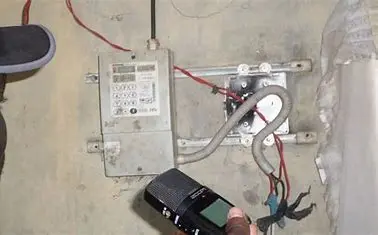
Introduction
Tamper-proof energy meters are devices that measure the amount of electrical energy consumed by a household or a business and prevent any unauthorized manipulation or interference with the metering process. Tampering with energy meters is a common problem in many parts of the world, as some consumers try to reduce or eliminate their electricity bills by various illegal methods. Tampering can also cause inaccurate billing, safety hazards, and revenue losses for utility companies. To avoid these problems, it is important to choose and install a tamper-proof energy meter that can detect and protect against different types of tampering attempts. In this blog post, we will discuss some of the things to look for before installing a tamper-proof energy meter.
Types of tampering

There are many ways to tamper with an energy meter, but they can be broadly classified into two categories: physical and electrical.
Physical tampering involves breaking into the meter casing, removing or bypassing the meter components, or altering the meter readings. Some examples of physical tampering are:
- Opening the meter cover and disconnecting the wires or shunts that measure the current.
- Reversing the polarity of the voltage or current inputs to make the meter run backward.
- Inserting magnets or metal objects near the meter to interfere with its operation.
- Replacing the original meter with a fake or modified one.
- Changing the display or the calibration settings of the meter.
Electrical tampering involves injecting or diverting current or voltage signals to make the meter register less or no energy consumption. Some examples of electrical tampering are:
- Connecting an external load in parallel with the meter to share the current.
- Using a capacitor or an inductor to create a phase shift between the voltage and current signals.
- Using a transformer or a diode to reduce the voltage or current input to the meter.
- Using a remote control device to switch off the meter during peak hours.
Tamper detection and protection features

To prevent tampering, modern energy meters use various tamper detection and protection features that can sense and respond to abnormal conditions. Some of these features are:
- Tamper-evident seals or security features that indicate if the meter cover has been opened or tampered with. These can include stickers, labels, locks, tags, etc.
- Sensors that measure the voltage, current, power factor, frequency, and temperature of the input signals and compare them with predefined thresholds. If any deviation is detected, the meter can trigger an alarm, store an event log, or send a notification to the utility company.
- Encryption and authentication mechanisms that ensure the integrity and security of the data transmitted between the meter and the utility company. These can include digital signatures, certificates, keys, passwords, etc.
- Backup battery or capacitor that can power the meter in case of a power outage or a voltage drop.
- Anti-reverse rotation feature that prevents the meter from running backward if the polarity of the input signals is reversed.
How to choose and install a tamper-proof energy meter

Before buying or installing a tamper-proof energy meter, These are some Things to Look Out for Before Installing a Tamper-Proof Energy Meter
- The type and level of tampering prevalent in your area. You should choose a meter that can detect and protect against the most common and sophisticated methods of tampering.
- The accuracy and reliability of the meter. You should choose a meter that meets the standards and regulations of your country or region. You should also check the calibration and certification of the meter.
- The cost and maintenance of the meter. You should choose a meter that fits your budget and has low operating costs. You should also check the warranty and service terms of the meter.
- The installation and configuration of the meter. You should follow the instructions and guidelines provided by the manufacturer or installer. You should also ensure that the meter is properly sealed and secured.
Conclusion
Tamper-proof energy meters are essential for ensuring fair and accurate billing, improving energy efficiency, and preventing revenue losses. By following these tips, you can choose and install a tamper-proof energy meter that suits your needs and protects your interests.
RELATED
How Build IoT Based Solar Panel Monitoring
New Technologies Used to Design Tamper-Proof Energy Meter


